What is Kawaii: Meaning, Culture, Fashion, Art, and More

What is kawaii, and how has it impacted the world? From the meaning of kawaii, its fashion, art, and history, to places to visit, here is all you need to know.
What is Kawaii? Origin and Meaning
Whether you're strolling down the bustling shopping streets of Tokyo or enjoying your favorite anime, it won't take long before you hear an excited voice exclaim the word "kawaii." But what is this magical term, and when and where can it be used?
Kawaii is a Japanese word that translates to "cute" in English, embodying a specific aesthetic that emphasizes innocence, charm, and playfulness. While the literal translation implies cuteness, the concept of kawaii encompasses a deeper cultural appreciation for vulnerability and warmth, often evoking feelings of tenderness and joy.
Pronounced approximately as "kah-wah-ee," this term consists of three distinct syllables that reflect its playful nature.
Kawaii is used in a variety of situations, making it a versatile expression in everyday life. People might use it to describe cute animals, like kittens or puppies, or to express delight over adorable fashion items, such as a frilly dress or a character-themed accessory.
Additionally, kawaii extends into social interactions; it’s common to hear parents calling their children "kawaii" when they display innocent behavior or wear cute outfits. The word even applies to food presentation, where beautifully arranged dishes, such as character bento boxes or desserts shaped like adorable animals, are described as kawaii.
In essence, kawaii is not just a word but a cultural phenomenon that encapsulates the joy of cuteness in various aspects of Japanese life, inviting everyone to embrace the playful spirit it represents!
The Power of Kawaii Culture
Kawaii is an important part of Japanese culture that brings out a variety of emotions and social connections. Research suggests that kawaii is linked to positive feelings of nurturing and protecting, much like how we feel about babies.
This natural tendency is enhanced by specific cultural traits in Japan, such as wanting love and acceptance and a love for small, adorable things.
Kawaii as a cultural trend has a universal appeal, connecting with people worldwide and highlighting the joy that cuteness can bring to our lives.
The History of Kawaii
Emerging prominently in the 1970s, the kawaii movement reflected youth culture in urban Japan, particularly in Tokyo. It arose from social and cultural shifts in post-war Japan, where a consumer-oriented society flourished, encouraging new forms of self-expression among young people.
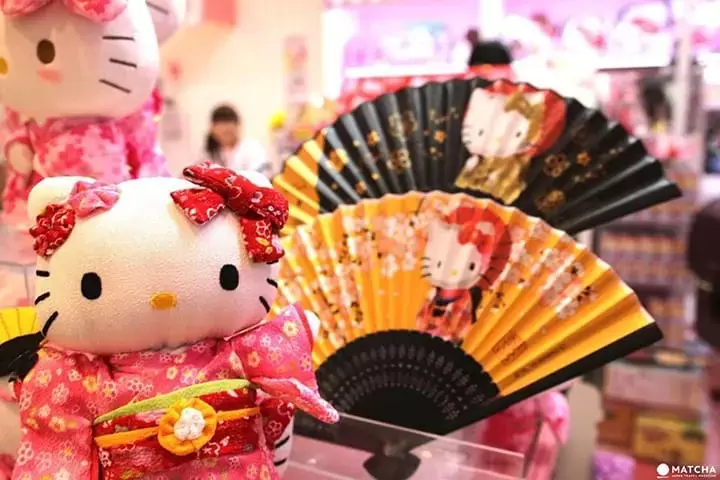
One of the first significant trends in kawaii fashion was vibrant clothing, oversized accessories, and playful patterns. The launch of Hello Kitty by Sanrio in 1974 marked a pivotal moment in kawaii history, establishing a cultural icon that paved the way for character merchandise, appealing to both children and adults.
The 1980s and 1990s saw kawaii culture gain traction through anime and manga like Sailor Moon and Pokémon, which introduced cute characters to global audiences. During this time, Harajuku emerged as the epicenter of kawaii culture and youth fashion, allowing individuals to express their uniqueness through bold styles, including Lolita and Decora fashions.
With the advent of the internet in the 2000s, kawaii culture expanded rapidly through platforms like Instagram and Tumblr, facilitating the sharing of kawaii art and fashion. New characters such as Rilakkuma and Gudetama further diversified the kawaii landscape, cementing its place in modern culture.
What is Kawaii Style?
Kawaii Fashion and Subcultures
Under the umbrella of kawaii fashion, you will find a long list of different subcultures, from those that have been around since the beginning of the movement to brand-new styles popping up each year.
For instance, in recent years, Tenshi Kawaii has gained popularity, characterized by its angelic themes, flowing garments, and soft color palettes that evoke a heavenly, ethereal look.
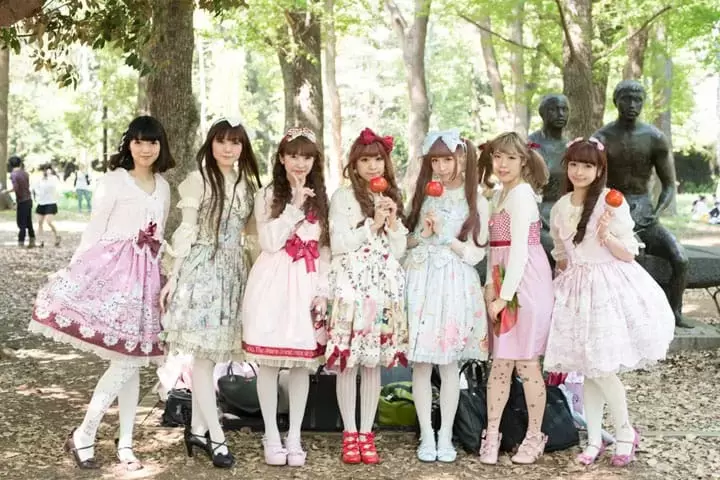
Classic Lolita draws inspiration from Victorian and Rococo styles, featuring high-waisted skirts and blouses adorned with lace and ribbons while emphasizing modesty and elegance in muted colors.
In contrast, Decora fashion is exuberant and fun, characterized by bright colors and an abundance of accessories, encouraging individuality through eclectic layering and character-themed items.
Kawaii Goth combines gothic elements with cute aesthetics, using darker colors and motifs like skulls while maintaining the charming essence of kawaii. Yami Kawaii, meaning "sickly cute," merges light pastel colors and cute characters with darker themes, often addressing mental health issues.
Lastly, Yume Kawaii, or "dreamy cute," incorporates whimsical, fantastical elements with dreamy motifs like stars and clouds, evoking a sense of imagination. Together, these subcultures highlight the diversity within kawaii fashion, celebrating a range of expressions and styles that resonate with different personalities and tastes.
Kawaii Brands
Kawaii fashion is a vibrant and essential aspect of Japanese culture, celebrated for its playful aesthetic and global appeal. A diverse range of unique brands has captivated fans worldwide, with elements of kawaii culture even evident in mainstream shops like UNIQLO.
Notable among these brands is Liz Lisa, which embodies femininity through vintage-inspired designs adorned with soft pastels and romantic details. Similarly, Baby, The Stars Shine Bright has established itself as a cornerstone of Lolita fashion, offering luxurious pieces that draw from Victorian influences.
In the realm of street style, 6%DOKIDOKI stands out with its bold colors and eclectic designs, perfect for the adventurous fashionista. For those attracted to darker themes, Alice and the Pirates, a sister brand to BTSSB, combines Gothic motifs with kawaii aesthetics.
Meanwhile, ANK ROUGE delivers trendy, youthful styles infused with cute elements, while Rojita focuses on sweet, romantic pieces embellished with vintage flair. Lastly, NOEMIE merges street fashion with kawaii charm, providing accessible options that add a playful twist to everyday wardrobes. Together, these brands beautifully illustrate the rich diversity and creativity within kawaii culture.
What Is the Kawaii Aesthetic
The kawaii aesthetic can be easily identified through its distinctive style, often featuring adorable soft pastel colors like pinks, blues, and yellows that evoke warmth and optimism.
This aesthetic centers around playful characters, usually animals or anthropomorphized objects with small expressive faces or large heads. Patterns like polka dots and cartoonish illustrations are commonly featured on notebooks, stickers, and other merchandise.
In home decor, the kawaii aesthetic transforms spaces into cheerful sanctuaries by incorporating character merchandise, cute kitchenware, decorative accessories, and whimsical furniture. Items like plush toys, pastel-colored dishes, and playful wall art enhance the warm atmosphere, making everyday living more enjoyable.
What Is Kawaii Art?
Kawaii art is a playful and vibrant style originating from Japan, characterized by bright colors, adorable characters, and whimsical designs. This art form often features exaggerated facial expressions, oversized eyes, and soft, rounded shapes, evoking feelings of joy and affection.
Key influences on kawaii art include shojo manga, a genre aimed at young girls that popularized kawaii aesthetics through series like Sailor Moon and Cardcaptor Sakura, showcasing magical themes and cute character designs.
Kawaii art has expanded globally, inspiring various forms of creative expression in pop culture, fashion, and merchandise, and continues to captivate audiences with its charm and nostalgia.
Famous Kawaii Characters
Popular anime characters are one of the first ways in which you can encounter Japan's kawaii culture, and many of them have become representatives of kawaii culture to the world.
Hello Kitty
Perhaps the most famous of all Japanese characters, Hello Kitty, designed by Sanrio, is an anthropomorphic kitten character. The red ribbon clipped to her head on the right-hand side is her trademark.
Pokemon
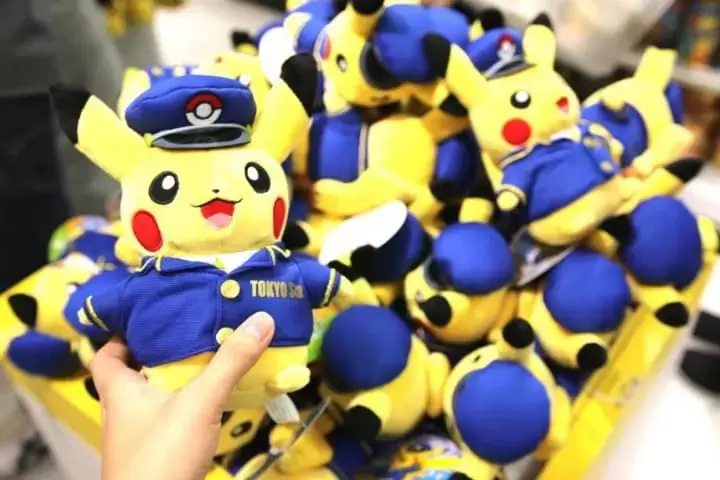
From the Nintendo game of the same name, Pokemon appear in all sorts of environments - inhabiting mountains, oceans, jungles, caves and many other places - and there are hundreds upon hundreds of Pokemon species spanning different media from comics to TV series, movies and more. Pikachu is perhaps the most famous Pokemon.
Totoro
Totoro, from the Studio Ghibli production “My Neighbor Totoro,” stands two meters tall and strongly resembles a horned owl. Totoro is the master of the forest, and can use magic. Totoro is the first character that comes to mind for many when they here the Ghibli name.
Doraemon
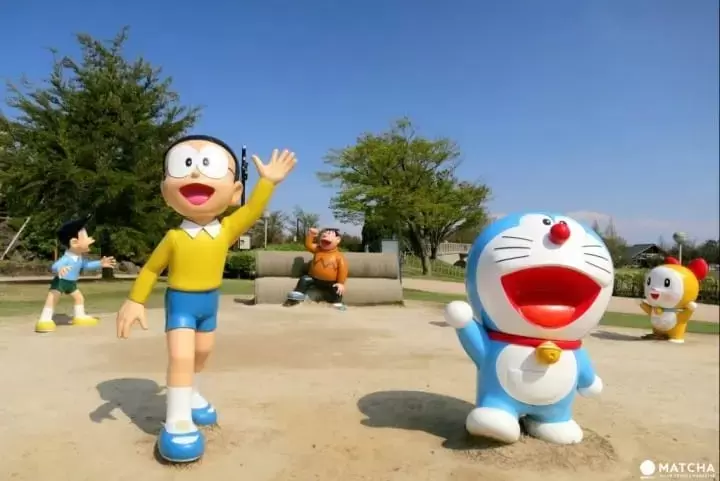
Doraemon is a cat robot from the future with an array of special gadgets, which he uses to help the perpetually unlucky elementary school student, Nobita. Doraemon’s characteristic features are his blue body, red nose and bell collar.
Other incredibly popular characters include Gudetama, a sluggish and uninterested egg; Kapibara-san, a capybara that loves onsens and grass; and Jibanyan, a cat ghost from the popular Yokai Watch franchise.
Yuru-chara: Mascot Characters
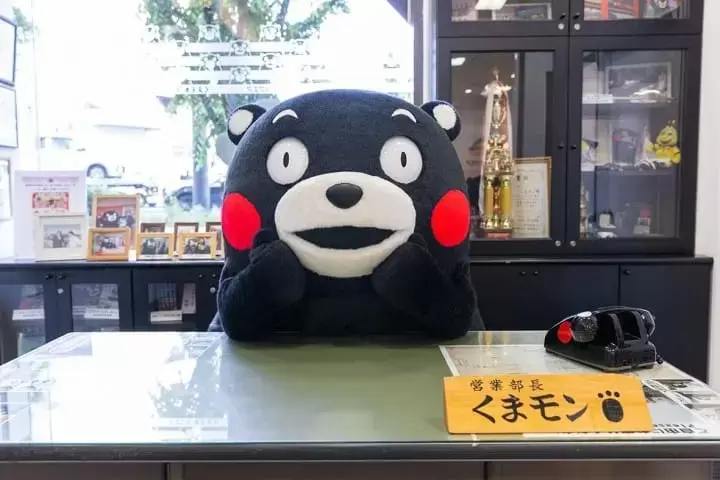
Kumamon
Yuru-chara are mascot characters specifically created to promote an area, event, or organization; they usually advertise noted regional products and sightseeing spots. They don’t have a particularly serious mission, and the characters are notable for their carefree and loose (“yurui”) vibes. Yuru-chara are popular enough that a Yuru-chara Grand Prix event is held for them every year.
The most famous yuru-chara is Kumamon, from Kumamoto prefecture. Popular both inside and outside of Japan, this kawaii character’s trademarks are his red cheeks and feigned air of innocence.
Another popular yuru-chara is Funasshi, a pear sprite from Funabashi in Chiba prefecture. Funasshi’s charm lies in its peculiar movements and its miraculous jumps. Thanks to the efforts of this character, Funabashi pears, the city’s noted product, became very well-known in Japan. Due to Funasshi’s high popularity, many kawaii Funasshi goods are sold in stores.
Recently, Zu-Shi-Hokki, a yuru-chara from Hokuto in Hokkaido, has received attention for its kimo-kawaii character. Zu-Shi-Hokki is an anthropomorphic piece of surf clam sushi, Hokuto’s local specialty. Despite its unpleasant appearance, Zu-Shi-Hokki has an inexplicable charm.
5 Anime Series to Watch if You Love All Things Kawaii
If you adore all things kawaii, there’s a delightful selection of anime that captures the essence of cuteness through charming characters and heartwarming stories.
Cardcaptor Sakura follows Sakura Kinomoto, a young girl who discovers a magical book and unleashes whimsical Clow Cards, blending fantasy with adorable aesthetics.
K-On! centers around a group of high school girls who form a music club, celebrating friendship and the joys of youth through delightful interactions.
Lucky Star offers a humorous glimpse into the everyday lives of high school girls, with relatable conversations about games and anime, all wrapped in a cute art style.
Tamako Market transports viewers to a charming shopping district, featuring Tamako, a cheerful girl working at her family’s mochi shop, as she navigates her whimsical world filled with lovable characters.
Finally, Bananya introduces a cat living inside a banana, embarking on silly adventures that are sure to make viewers smile. These anime series are brimming with charm, making them perfect picks for any kawaii enthusiast in search of heartwarming tales and delightful characters!
What Is Kawaii Music
Kawaii music encapsulates the whimsical and playful essence of cute culture, characterized by upbeat melodies, light-hearted themes, engaging lyrics, and lively performances. This genre features bright, cheerful tunes with catchy choruses that encourage audience participation. The lyrics often revolve around love, friendship, and everyday experiences, celebrating the charming aspects of life.
Kawaii music draws from various genres, including pop, electronic, and elements of rock or hip-hop, resulting in a broad range of sounds while maintaining a playful edge. Key sub-genres include kawaii future bass and kawaii metal.
Noteworthy examples of kawaii music include Kyary Pamyu Pamyu, a globally recognized idol and fashion trendsetter, known for her unique songs and personal style. She has played a significant role in popularizing the concepts of "kawaii" and Harajuku fashion worldwide.
AKB48, an idol group founded on the idea of allowing fans to meet their favorite idols, performs daily shows in Akihabara, with their characteristic kawaii outfits reminiscent of Japanese schoolgirl uniforms.
Additionally, Babymetal, a female dance unit that fuses kawaii aesthetics with heavy metal, combines cute appearances with intense performances, gaining significant popularity both in Japan and internationally.
Living in Japan - Kawaii is the Norm
In Japan, kawaii permeates everyday life and has evolved into a cultural phenomenon. From food packaging adorned with cheerful characters to whimsical posters gracing shop walls, billboards, and trains, the emphasis on cuteness is omnipresent. Even town mascots are designed to embody kawaii aesthetics, promoting local culture and tourism with their adorable appearances.
This dedication to cuteness influences various aspects of society, including fashion, art, and entertainment, making kawaii not just a trend but a lifestyle. For many in Japan, surrounding themselves with cute elements brings joy and comfort, reflecting a collective appreciation for the charm and innocence that kawaii culture embodies.
Kawaii Places to Visit in Japan
1. Tashirojima, Cat Island
Tashirojima, also known as Cat Island, is a delightful destination for cat lovers and travelers seeking a unique experience in Japan. This charming small island, located in the Pacific Ocean off the coast of Ishinomaki in Miyagi Prefecture, is famous for its abundance of friendly cats that roam freely and are often seen lounging around the village.
Tashirojima is not only a haven for felines but also features cat-themed accommodations, including a cat-shaped lodge, where visitors can immerse themselves in the whimsical atmosphere.
The island offers picturesque views, hiking trails, and shrines dedicated to cats, celebrating their significance in Japanese culture as symbols of good fortune
Okunoshima, Japan’s Rabbit Island
Okunoshima, or Rabbit Island, is a charming getaway in Japan's Inland Sea, home to around 1,000 free-roaming rabbits that delight visitors. The island features scenic paths perfect for leisurely strolls, where gentle bunnies hop around, eagerly engaging with tourists for treats or a friendly pat.
This enchanting retreat offers a peaceful escape, allowing you to enjoy the playful spirit of its furry residents. Whether you're capturing cute photos or simply soaking in the tranquil atmosphere, Rabbit Island provides a delightful experience that brings joy to all who visit.
To get there, take a ferry from Hiroshima, making it a convenient one-day trip for those looking to explore this unique destination.
Read also
Hello Kitty Island
The HELLO KITTY SMILE and HELLO KITTY APPLE HOUSE in Awaji Island, Hyogo Prefecture, are must-visit destinations for kawaii lovers.
HELLO KITTY SMILE is an indoor paradise where fans can meet Hello Kitty, enjoy a themed restaurant, and access various photo spots and engaging activities. The HELLO KITTY APPLE HOUSE is the world's largest apple-shaped observation theater that brings Hello Kitty's whimsical dream world to life through stunning projection mapping in a 360° dome theater.
Visitors can enjoy breathtaking views from the 15-meter high observation deck, including a unique perspective of Hello Kitty's face on the HELLO KITTY SHOW BOX and the beautiful Harima Nada Sea. The facility also offers exclusive merchandise and delightful apple-themed food, promising a charming experience for fans of all ages.
Sanrio Puroland
Sanrio is the company behind internationally beloved kawaii characters like Hello Kitty, My Melody, Pompom Purin, Cinnamoroll, and the Little Twin Stars. Sanrio also operates an indoor theme park featuring those characters, known as Sanrio Puroland.
Featuring a variety of shows and attractions, the park offers many opportunities for visitors to meet Sanrio characters in person. The food items sold in the park are themed after the characters and are so kawaii it’s almost a shame to eat them.
Naturally, there are also Sanrio Puroland-exclusive goods available for purchase, and the park is a kawaii paradise for fans of Sanrio characters.
Mitaka Ghibli Museum and Ghibli Park
The anime film production company Studio Ghibli is renowned all over the world for its beautiful animated films and its kawaii characters. At the Mitaka Ghibli Museum, you can immerse yourself in the world of Ghibli to your heart’s content.
The museum is a Ghibli fan’s dream, with displays featuring Hayao Miyazaki’s hand-drawn storyboards for his films, as well as materials and documents for characters from each of Studio Ghibli’s films.
Alternatively, if you are a Studio Ghibli fan exploring Japan, a visit to Ghibli Park in Aichi Prefecture is a must! This expansive park immerses visitors in the whimsical worlds created by renowned director Hayao Miyazaki.
Inspired by beloved films such as "My Neighbor Totoro," "Spirited Away," and "Princess Mononoke," Ghibli Park features meticulously crafted reproductions of iconic scenes, inviting guests to step into the enchanting landscapes of their favorite stories.
Read also
Where to Shop for Kawaii Things
Sunshine City
Sunshine City, located in Ikebukuro, Tokyo, is a vibrant shopping and entertainment complex that offers an array of attractions for kawaii lovers. Inside the shopping center, visitors can find adorable shops such as Pikachu Sweets Cafe, where Pokémon-themed treats delight fans, as well as The Pokemon Center, which features a wide range of Pokémon merchandise.
Fashion enthusiasts can explore Axes Femme, known for its cute and feminine clothing, while SNOOPY TOWN offers a delightful selection of Snoopy-themed items. The Rilakkuma Store provides an array of merchandise featuring the beloved lazy bear character, and Donguri Kyowakoku, the Ghibli store, showcases enchanting goods inspired by Studio Ghibli films.
Sunshine City also boasts numerous shops dedicated to kawaii merchandise, including fashion boutiques and specialty stores where visitors can find plush toys, accessories, and stationery inspired by popular kawaii characters.
Donguri Republic: The Official Shop Handling Studio Ghibli Merchandise
Donguri Republic is a chain of stores that handle official merchandise themed around Studio Ghibli characters. One of the stores is located in Tokyo Skytree Town Solamachi.
The Donguri Republic stores feature an impressive array of items, including plush toys, stationery, apparel, kitchenware, and home decor, all themed around iconic Studio Ghibli films such as "My Neighbor Totoro," "Spirited Away," and "Princess Mononoke."
In the Tokyo Skytree Town Solamachi branch, a larger-than-life Cat Bus is prominently displayed in the front window, warmly welcoming visitors to the store. Inside, fans can also enjoy a Totoro photo spot, allowing them to capture memorable moments with one of the studio's most beloved characters.
Harajuku Takeshita Street
For over 35 years, Harajuku has been on the cutting edge of fashion for the younger generation. Takeshita Street is particularly famous, with rows of popular boutique shops teeming with fashionable people, while Laforet is the central shopping mall where you can find the foremost fashion brands of the area.
Thanks to the influence of fashion magazines, Harajuku fashion is recognized as the foundation of kawaii and comes in a very diverse and imaginative range of styles.
Tokyo Skytree Town
The Tokyo Skytree Town is located around the popular Tokyo Skytree, and one of its attractions is Solamachi. The Rilakkuma Store is on Solamachi’s third floor, and just looking at the kawaii merchandise on display helps window shoppers to feel relaxed.
The fourth floor is home to Hello Kitty Japan, where you can buy all sorts of goods featuring the world-famous Hello Kitty brand. Both stores boast an expansive selection, with special exclusive items developed in collaboration with Tokyo Skytree. Even if you’re just window shopping, these two great kawaii characters will refresh your spirit.
Shibuya 109
Shibuya 109 is a stronghold of cutting-edge fashion, and its distinctive building is flooded with crowds of fashion-conscious young people. Shibuya 109 is home to more than 120 shops, and naturally, the employees are quite stylish too.
There are employees at Shibuya 109 known as “charismatic salespeople” for their kawaii personal style and skill at looking after their customers, and even employees who work as models.
Tokyo Character Street
Tokyo Character Street handles the character merchandise of internationally-famous Japanese properties such as Studio Ghibli, Pokemon, and Weekly Shonen Jump, as well as kawaii Sanrio products. This one-stop shop is noted for its varied selection, which lets shoppers efficiently pick up goods from all sorts of genres without having to go around to the official stores.
Easily accessible from the Yaesu exit of Tokyo Station, it’s ideally located for a quick visit while you’re waiting for a connecting train. If you want to buy a lot of character goods or compare lots of different souvenirs, stroll over to Tokyo Character Street.
Read also
Kawaii Cafes in Japan
Kawaii cafés offer unique dining experiences that celebrate cuteness and character culture. Featuring adorable décor and themed menu items inspired by popular characters, these cafés provide whimsical atmospheres where guests can enjoy playful meals and interactive entertainment.
SANRIO CAFE
The SANRIO CAFE Ikebukuro, located in Sunshine City, is a whimsical dining destination for fans of Sanrio characters. Since its opening in 2020, this café invites guests to enjoy a menu inspired by beloved Sanrio icons, including Hello Kitty, My Melody, and Pompompurin.
Guests can savor delicious offerings such as hamburgers and pancakes, each showcasing character designs, along with delightful drinks and smoothies.
The café features a cozy interior designed to create a relaxing atmosphere filled with cuteness. It includes two areas: a café space for dine-in experiences and a takeout corner where visitors can grab character-inspired sweets and drinks on the go.
The café also provides original merchandise, including exclusive key holders and mini tote bags, perfect for adding a touch of Sanrio charm to your collection.
Pokemon Cafe
The Pokémon Café, located within the Pokémon Center Tokyo DX in Nihonbashi, Tokyo, is a must-visit destination for Pokémon fans. Since its opening on March 14, 2018, the café has become a vibrant spot where visitors can immerse themselves in the Pokémon world.
The menu features delightful items such as Pikachu's Greedy Plate, combining cuteness and flavor, and Gengar's Mysterious Light Smoothie, inspired by Gengar's signature move.
In addition to its creative dishes, guests can enjoy interactive experiences, including greeting shows with Chef Pikachu and Waitress Pikachu, as well as exclusive merchandise and limited-edition placemats and coasters.
The Kirby Café in Tokyo Skytree Town
The Kirby Café is a whimsical dining experience for fans of the beloved game series, "Kirby of the Stars." Located on the 4th floor of Tokyo Skytree Town, this café invites guests to immerse themselves in a vibrant atmosphere where Kirby's world comes to life through themed decor and deliciously creative menu items,
Since its opening, the café offers a variety of unique dishes, including the Waddle Dee Burger, made with healthy soy meat and avocado, and Waddle Dee's Lomilomi! Salmon Avocado Rice Bowl. Popular choices also include the "Staring intently! Waddle Doo's Biribiri☆Beam Salad," a fun tomato salad designed to capture Waddle Doo's character.
The interior features charming Kirby-themed decorations, including plush figures and colorful murals that enhance the enchanting atmosphere
Maid Cafes
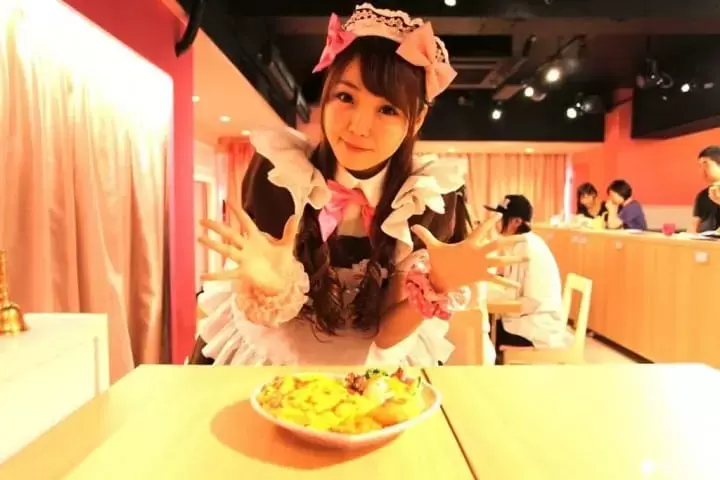
Maid cafés are a unique and popular attraction in Japan, particularly in districts like Akihabara, Tokyo. These themed cafés feature waitresses dressed in cute maid outfits who provide a playful and interactive dining experience.
Guests are treated as “masters” and “mistresses,” and the staff engages in various entertaining activities, such as singing, dancing, and playing games. The menu typically includes a variety of cute and elaborately presented dishes, such as omelets and desserts.
Maid cafés offer a blend of escape and fantasy, making them a whimsical destination for tourists and locals alike, eager to experience a slice of Japanese pop culture.
Enjoy Kawaii Culture in Japan
We hope this article inspires you to enjoy the kawaii side of Japanese culture during your travels.
Read also
Assistant editor at MATCHA since 2023, Kate is a photographer who enjoys traveling Japan's hidden gems and adventuring off the beaten path. Living in Japan since 2018, she has traveled across different areas of Japan. From indulging in Aomori’s apple pies and fiery festivals to exploring the quaint charm of Nagasaki’s cat-filled streets she is always searching for new areas full of atmospheric beauty, festivals, and seasonal events to capture on camera.

















































![[Just a short distance from Nagoya] Popular Taiwanese YouTuber Alan tours Aichi, Tokoname!](https://resources.matcha-jp.com/resize/720x2000/2026/01/08-255181.webp)

